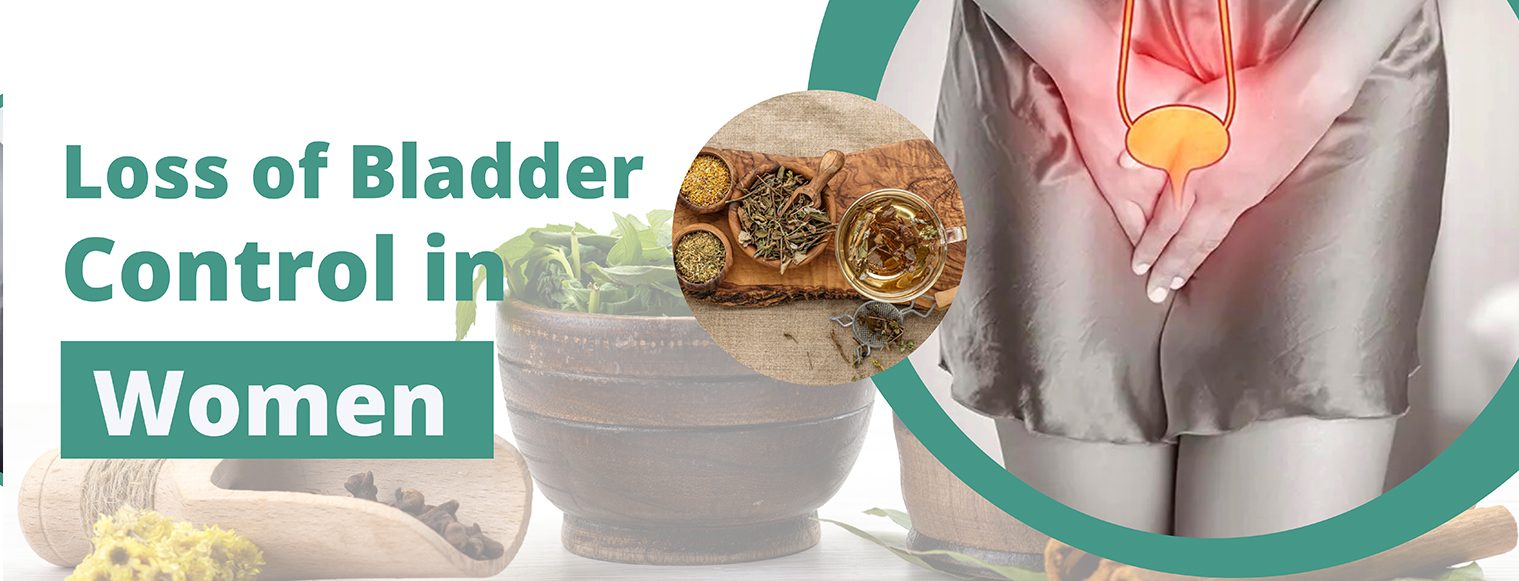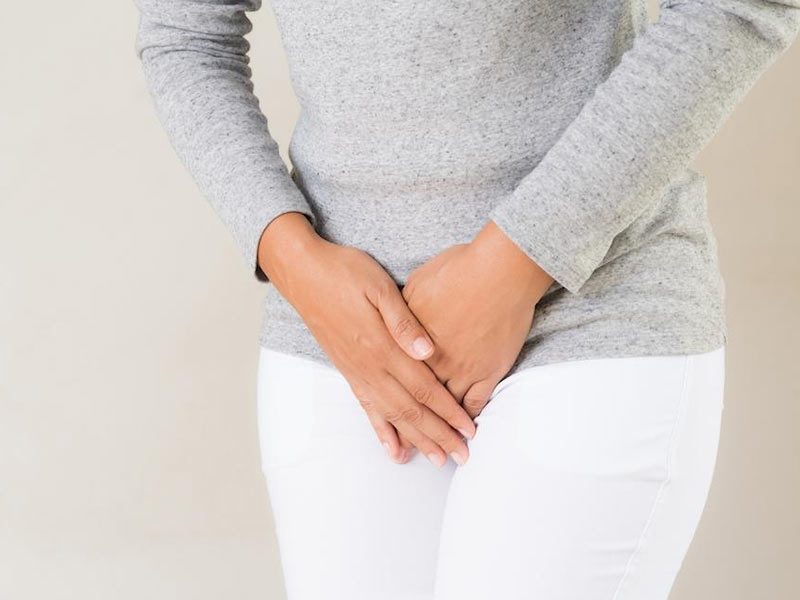
Loss of Bladder Control in women
Urinary incontinence means an individual leaks urine by coincidence. Although it can occur to anyone, urinary incontinence, also recognized as overactive bladder, is more common in older individuals, especially women. Bladder control problems can be uncomfortable and cause individuals to avoid their normal actions. But incontinence can frequently be stopped or controlled.
Positioned in the lower abdomen, the bladder is a hollow organ that is a portion of the urinary system, which also comprises the kidneys, ureters, and urethra. Throughout urination, muscles in the bladder constrict to move urine into the tube-shaped urethra. At a similar time, the muscles around the urethra diminish and let the urine pass out of the body. When the muscles in and around the bladder don’t effort the way they should, urine can leak, subsequent in urinary incontinence.
Symptoms Of Urinary Incontinence
Urinary incontinence is not an illness by itself. Urinary incontinence is a sign of additional health problems, generally weak pelvic floor strengths. In addition to urinary incontinence, some females have other urinary signs:
- Pressure or spasms in the pelvic part that causes a strong need to urinate
- Going to the toilet more than normal
- Urinating although sleeping (bedwetting)

Causes of Urinary Incontinence
Urinary incontinence is generally caused by difficulties with the muscles and nerves that support the bladder to hold or pass urine. Certain health actions unique to females, such as pregnancy, childbirth, and menopause, can cause difficulties with these muscles and nerves.
Other causes of urinary incontinence include:
- Overweight
- Constipation
- Nerve damage
- Surgery and many others.
Treatment for Loss of Bladder Control
There are several conservative treatments available for the loss of bladder control in women. But ayurvedic treatment is one of the best treatment options that help to cure your problems without causing any side effects.
UI arises in the late ’50s of life, it is primarily due to Vata Pradhanata in Jara Awastha i.e., due to Vata Dosha domination in old age. Significant weight gain can deteriorate pelvic floor muscle tone, and cause urinary incontinence. Losing weight, a healthy diet, exercising, and avoiding alcohol and caffeine are beneficial life changes in urinary incontinence.
The corresponding behavioural intervention that may offer therapeutic assistance for urinary incontinence is workout and Yoga. Pelvic floor exercises (Kegel exercises) can support and strengthen the muscles of the pelvic floor that care for the bladder and close the sphincter. Bladder training can support patients learn to delay urination. Pelvic Floor Yogic Exercise (PFYE) is a very effective technique for reinstating urinary incontinence.
Along with these treatment choices, taking ayurvedic medicine is best to control or treat your problem. At Urine Leakage, we are known as one of the best ayurvedic centres to provide herbal medicine for urinary incontinence. So, contact us to take the right treatment for your problem.
How Loss Of Bladder Control In Women Can Be Diagnosed?
Diagnostic testing for the cause of bladder problems must be approached with caution. Doctors utilize tests and methods to establish the condition, its severity, and design the most suitable treatment plan.
- Screening Medical History: The doctor asks for symptoms, lifestyle, childbirth history, and medication intake.
- Physical Examination: A sensitive pelvic examination is utilized to screen for muscle strength and signs of pelvic organ changes.
- Special Tests: Sometimes, ultrasound or urodynamic studies are used to investigate bladder function in detail.
Tests That Can Be Done To Diagnose Loss of Bladder Control in Women
Incontinence of the bladder is due to different reasons, and the most effective treatment should be chosen after the proper diagnosis. Doctors use many tests to study the status of the bladder and related body functions. The most common are as follows:
- Medical History and Physical Examination: The doctor asks for symptoms, habits, medications and performs a superficial pelvic examination.
- Urine Tests: A simple urine sample is tested for infection, blood, or other abnormalities.
- Bladder Diary: The patient maintains a diary of fluid intake, bathroom visits, and leakage episodes for several days.
- Post-Void Residual Test: Tests for urine remaining in the bladder after voiding.
- Urodynamic Studies: Studies bladder pressure, muscle function, and its ability to store and empty urine.
- Cystoscopy: A thin tube with a camera tip is passed through the bladder to look for blockages, stones, or tumors.
- Ultrasound Scan: It takes pictures of the kidneys and bladder to evaluate for abnormalities.
- Stress Test: The patient is asked to cough or strain in order to assess whether leakage is present.
Preventive Tips and Lifestyle Changes for Better Cure
Preventive medication and a healthy lifestyle should be taken into account before dispensing any form of treatment for women’s incontinence. Minor modifications in daily life can improve bladder function and reduce discomfort. Some of the healthy tips are:
- Hydrate: Regulate water intake to ensure healthy bladder function and also prevent irritation.
- Balanced Diet: Eat foods that contain fiber to prevent constipation, which could worsen bladder problems.
- Weight Regulation: Maintain a healthy weight to reduce the pressure on the bladder and muscles of the pelvis.
- Restrict Heavy Lifting: Steer clear of heavy lifting that causes stress on the pelvic area, as it will exacerbate the bladder weakness.
Diet You Should Focus On And Avoid
Food is essential to make your body naturally healthy. It helps your body to heal fast, strong, and stay fit. Each food has its own benefits, but what you should eat or avoid during loss of bladder control in women is important. Let’s see:
Foods to Eat:
- Fresh fruits: Apples, pears, grapes, and berries are easy on the bladder.
- Vegetables: Carrots, cucumbers, green beans, and leafy greens are bladder-friendly.
- Whole Grains: Brown rice, oats, and whole wheat supply fiber and help avoid constipation, which can minimize bladder pressure.
- Plant-Based Proteins: Lentils, beans, tofu, and chickpeas are nutritious protein sources.
- Nuts and Seeds: Almonds, sunflower seeds, and pumpkin seeds provide energy and vital nutrients.
- Water: Adequate water intake keeps urine from becoming too concentrated and irritating.
Foods to Limit:
- Caffeine: Caffeinated tea, coffee, and chocolate may overstimulate the bladder.
- Spicy Foods: Hot peppers, spicy sauces, and pungent spices can irritate the bladder lining.
- Citrus Fruits: Oranges, lemons, and pineapples are acidic and can worsen symptoms.
- Artificial Sweeteners: Diet foods and beverages can trigger bladder irritation.
- Carbonated Drinks: Sparkling water and sodas cause urgency and discomfort.
